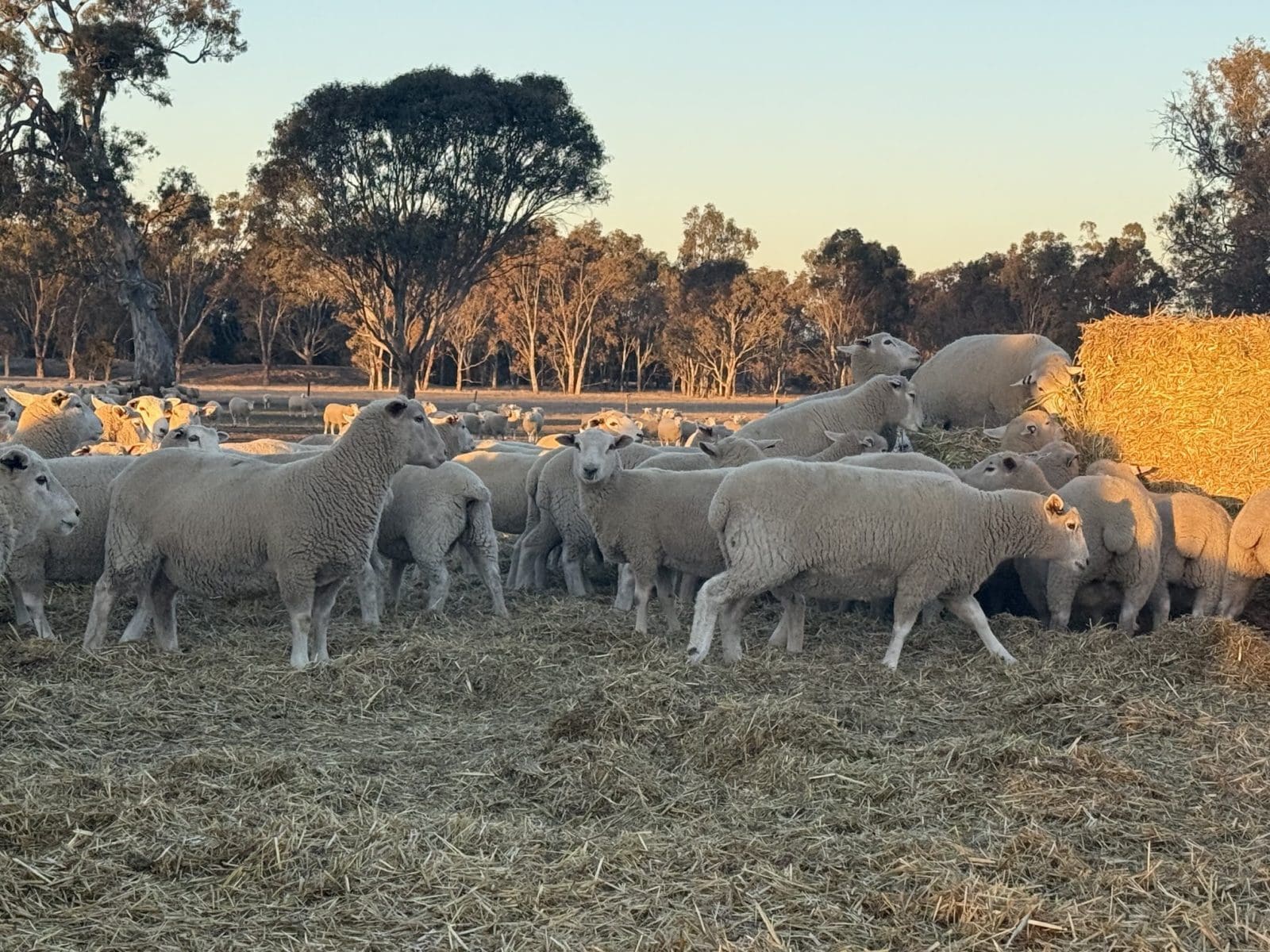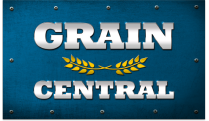
Joined ewes are leaning on dry feed ahead of pastures and cereals growing to a grazable density after recent rain. Photo: Tim Leeming
RECENT rain across most of Victoria and South Australia has already sparked germination of crops and pastures, and stock are expected to progressively return to grazing over coming weeks.
However, prices for fodder in south-eastern Australia are tipped to maintain their strength based on demand generated by those with pregnant or mothering ewes, heifers, and cows to feed over winter.
Conditions permitting, September will see the end to months, and more than a year in many cases, of confinement or hand feeding, and the biggest challenge for graziers will be to transition their ruminants from rations to green feed without causing stock illness or deaths.
Peak need
Farm Tender principal Dwain Duxson said while some farms have had up to 50mm of rain in recent days, others have missed out.
“Nothing’s changed, because places like southern Victoria are not looking at getting grass until September,” Mr Duxson said, adding that nutritional and energy requirements were high at this time of year.
“It gets cold, and the intake required increases.”
In south-west Victoria, most graziers and mixed farmers have had 40mm or more of rain in the past week, and Geelong-based Nicon Rural Services director Cam Nicholson said the brightened mood was palpable.
“Feed is pretty tight, but most people with this rain can now see light at the end of the tunnel,” Mr Nicholson said.
South-west Vic sees considerable areas sown to dual-purpose barley and red wheat, but Mr Nicholson said most farmers will have to choose either grazing or grain, because both will not be an option.
Mr Nicholson said dual-purpose cereals ideally establish in April to provide grazing in early winter.
“There’ll be limited opportunities for that this year.
“The grazing window has reduced, and some people, because the rain came so late, may value that crop more for lambing.”
He said some will opt to let lambing ewes graze out cereals in order to reduce the risk of mismothering, more likely to occur when supplementary feeding is taking place, a take-home message from last year’s drought.
“If your priority is not wanting to feed ewes while they’re lambing, you’re probably going to graze the crop.
“People are lambing now and over the next month or two, so if you’re not lambing until August… you’ve got an opportunity for that crop to grow enough for it to be grazed.”
Ahead of a wave of calving due to occur in August-September, and lambing also, Mr Nicholson said gibberellic acid and nitrogen can be applied to kick the crop on, provided conditions do not turn from drought to sodden.
“We have two months to try and boost that body of feed.”
As sheep and cattle transition from hand feeding to grazing, Mr Nicholson and Casterton-based Meridian Ag senior agronomy consultant and director Andrew Speirs stressed the importance of careful management to avoid disorders than can cause illness or death.
They include phalaris staggers, acidosis, grass tetany, and milk fever.
Jump from pastures
Mr Speirs said rain of recent days has brought happiness and relief to producers, and perennial pastures should respond, despite the winter temperatures.
“Virtually all phalaris and most cocksfoots will produce feed, but some perennial ryegrass might not have gotten through,” Mr Speirs said.
If perennial ryegrass has not shot within 7-10 days, he said stands have likely succumbed to the drought, and oversowing may be required.
In as little as two weeks, Mr Speirs said some paddocks could be ready to support some grazing by sheep, provided they have access to barley and hay.
“It’s going to be six weeks until people have reasonable feed in front of them.”
“There are still a lot of animals to be fed for a lot of time.”
Hard-seeded pastures are already responding to the rain in Vic, SA and an earlier event in southern New South Wales.
Broken down by exposure to temperature fluctuations over the drought, seed coatings on medic, clover, sub-clover, biserrula and serradella varieties have thinned to allow a speedy germination.
Reintroduction to green feed on hard-seeded pasture varieties also requires careful management to ensure animals remain healthy.
Grain Central: Get our free news straight to your inbox – Click here

HAVE YOUR SAY